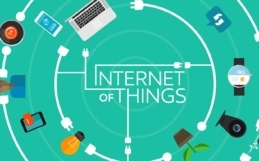Leadership … whether you’re in the tech industry or vegetable distribution … it is as much about posing questions as seeking answers. It’s about encouraging dialogue and debate, building mechanisms to raise red flags early, and learning from mistakes. These abilities require discipline, attention to detail, and good old-fashioned common sense. Good business leadership means you have the ability to anticipate trends and market changes, and it means you have the willingness to adapt where necessary.
According to a recent editorial piece in NetworkWorld, there are 3 areas or principles that IT Directors and CIOs need to embrace in order to establish themselves as legitimate business executives and secure themselves as linchpins within their organizations. As with most pieces of good advice, they are simple, tried and true, and these are always worth repeating.
Demonstrate executive-level leadership by taking a business-first approach to managing the technology function of your organization. In other words, remember that you are—first and foremost—beholden to the CEO and to the vision of the company … not to the data centre or end-user demands.
Balance strategic thinking and long-term planning with sound operational execution. In other words, plan your work in accordance with long-term business strategy and surround yourself with a team that can help you work that plan. The driver for your IT projects needs to come from the bird’s eye view; and you must commit to only those projects that fit the landscape.
Run IT as a business within a business; taking a service-oriented approach that empowers business associates to drive their own IT agenda.
The last one deserves emphasis … This principle has been at the core of ITW’s consulting practice for some time. And with the rising popularity of cloud computing, SaaS, and HaaS, the idea that IT should be service-based is catching on. It starts when you accept that different kinds of workers have different kinds of technology needs. Mobile workers need remote access to their apps, shift workers need simple, easy-to0-fix workstations, and above all else … you have to accept that people—tomorrow’s workforce in particular—need and desire choice.
Running your IT department like a service business within your organization involves shifting the lens through which you see your role … It’s about changing your perspective on how to navigate and shape the interplay between your business processes, devices, and people. Consider this great excerpt from the NetworkWorld article I i mentioned above,
Rather than focusing on what IT does, an organization should focus on the products and services it “sells” to its business associates. It must develop service-level options for its customers to choose how they use technology. Consider, for example, a storage team that has laid out various options for performance, recovery objectives, resiliency and cost.
Managing IT as a business provides several benefits: It creates an entrepreneurial environment for the IT staff, creating more business awareness for tomorrow’s leaders; it enables benchmarking of costs; and it positions the CIO as a true operational leader.
Embrace the idea that you are running a service business … You aren’t just a servant. Treating other business units like customers will enhance your relationship with them and … ultimately … strengthen your business.
Now who doesn’t like a win-win situation?




